[Technical Sharing] Wi-Fi 7 Introduction
What is Wi-Fi 7?
In the late 1990s, the Institute of Electrical and Electronics Engineers (IEEE) created the first WiFi standard, 802.11b, which became widely accepted. Since then, it has continued to evolve, such as expanding from the 2.4 GHz band to operating either in 2.4 GHz, 5 GHz, or 6 GHz bands. Wireless protocols also adopted a more approachable naming scheme to announce the new generations of WiFi standards; such as Wi-Fi 4, Wi-Fi 5 and Wi-Fi 6/6E. These represent 802.11n, 802.11ac and 802.11ax, respectively.
WiFi 7 (IEEE 802.11be) is the seventh generation of the 802.11 standard since 1997. It packs all the benefits of WiFi 6/6E and expands several existing standards to a whole new level, such as 320 MHz bandwidth and 4K-QAM. And it introduces some revolutionary features like Multi-Link Operation, Multi-Resource Units (MRU) and Puncturing. As WiFi has become indispensable in daily life from work to home, WiFi 7 reshapes your WiFi experiences with a huge leap into the future.
*This page explains the technical standards of WiFi 7 technology. Actual specifications and feature availability vary based on device. Please refer to the product specifications page for your device.
Wi-Fi 7 vs Wi-Fi 6: What’s the difference?
Now let’s discuss Wi-Fi 7, whose official name is [Institute for Electrical and Electronic Engineering (IEEE) 802.11be].
Wi-Fi 6 provides what is known as a [High Efficiency] WLAN, while Wi-Fi 7 goes beyond and earns the EHT or [Extremely High Throughput] label. Its predecessor Wi-Fi 6E has just recently begun to take off, and its ability to transmit wireless data at speeds in excess of 2,000 Mbps has impressed power users.
By merging three data bands (2.4, 5 and 6 GHz), ultra-wide data channels and numerous data channels together for even greater performance, Wi-Fi 7 goes a step further. Because of this, the newest wireless standard has the potential to usher in a new era of connectivity and reliability that would make wired connections obsolete.
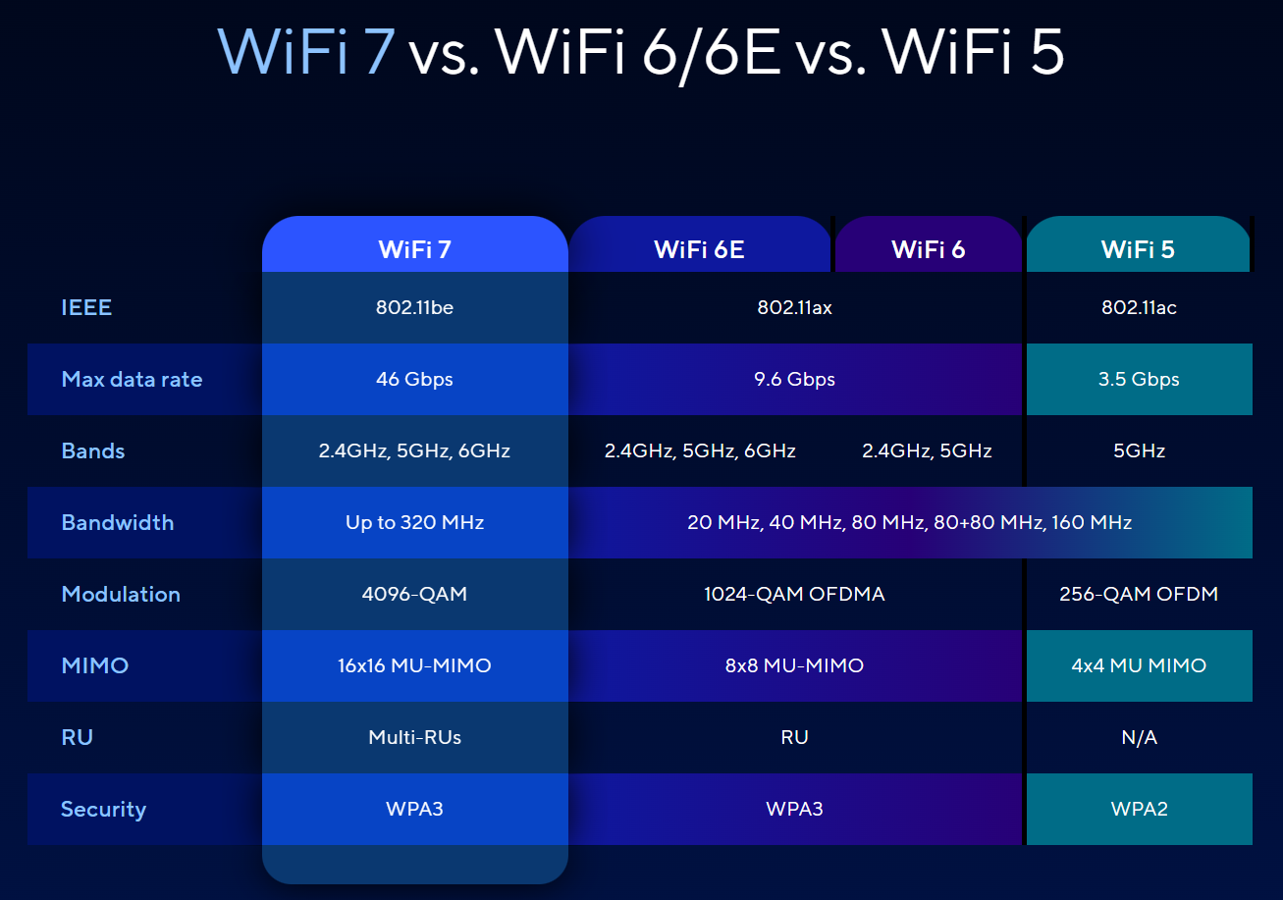
So, what are those improvements Wi-Fi 7 going to bring to us? Let’s dive into the new generation of WiFi.
More you should know about Wi-Fi 7
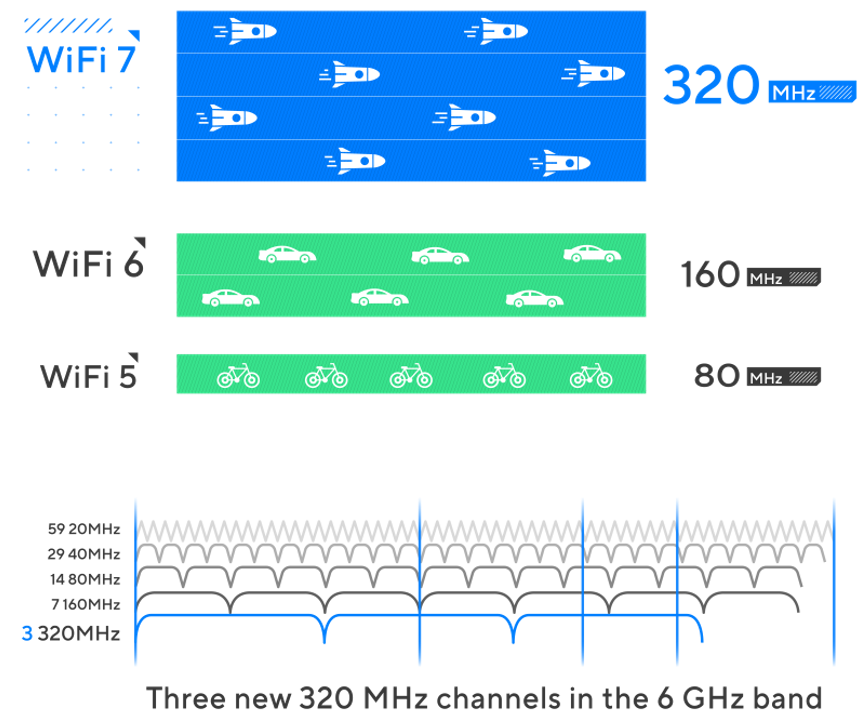
While Wi-Fi 6E increased channel width in the 6 GHz band to 160 MHz, Wi-Fi 7 pushes the bandwidth to ultrawide 320 MHz channels, doubling data transmission capacity. You can interpret networking as the freeway and the doubled bandwidth as the wider lane. Now larger vehicles packed with more data can get on the freeway.
* Due to regulatory restrictions, the 6 GHz band is only available in some regions/countries.
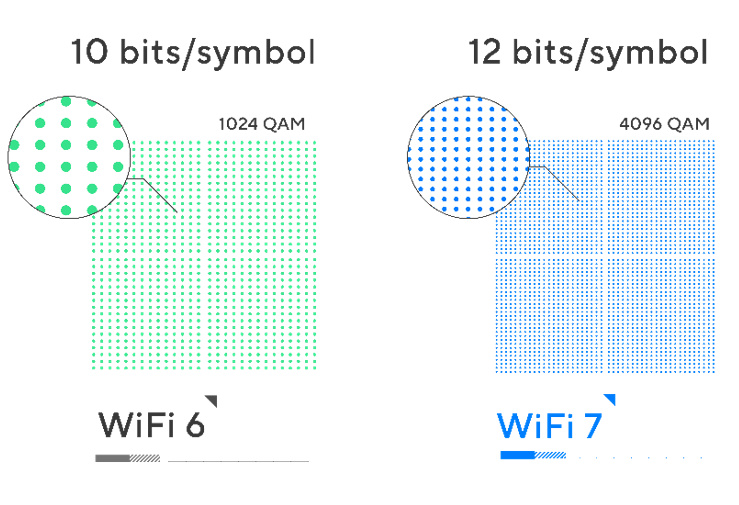
With the introduction of 4K-QAM, Wi-Fi 7 improves data transmission rates by 20% compared to Wi-Fi 6/6E since a higher QAM number means that data can be more densely compacted into a signal transmission. Now higher QAM means that more merchandise can be loaded onto one vehicle. In other words, you can now upload/ download more data at the same time than before.
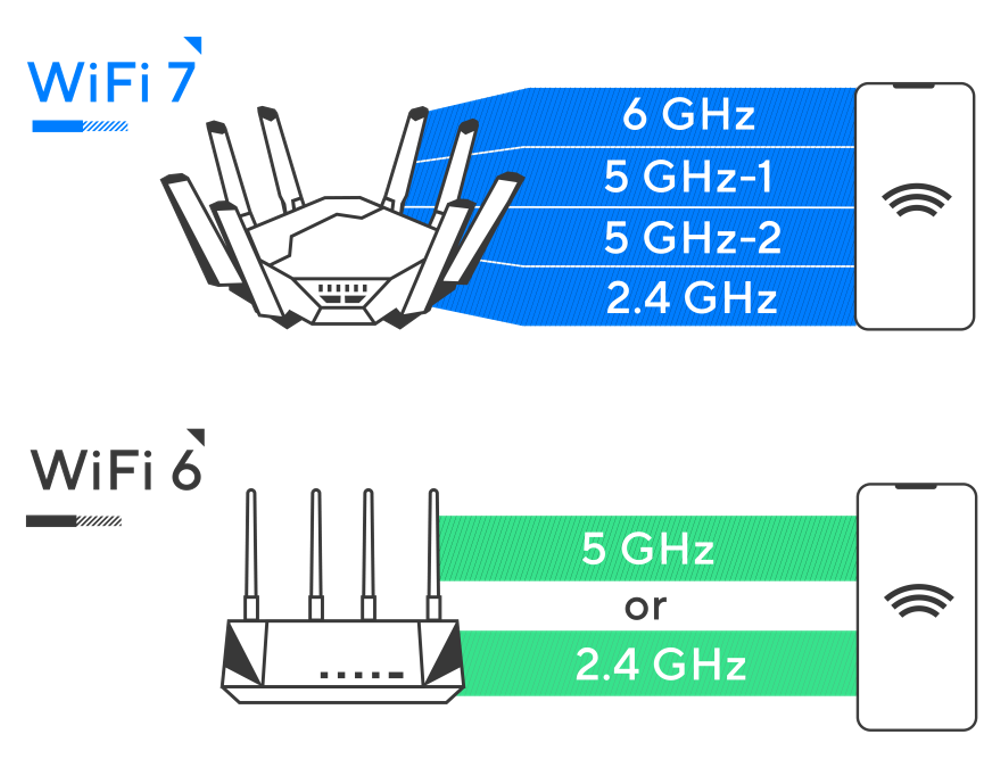
Before Wi-Fi 7, transmissions were limited to one band, such as 2.4 GHz or 5 GHz. MLO (Multi-link Operation) enables one device to connect to different bands, allows devices to transmit and receive data across bands simultaneously, and enables faster speeds by aggregating bandwidth with more reliable WiFi connections on multiple concurrently used bands. In other words, now the vehicles in our analogy can switch lanes without having to re-enter the freeway, freeing them to transport important merchandise with fewer delays.
*Simultaneous MLO means STR (Simultaneous Transmit and Receive) mode. Alternating MLO means eMLSR (enhanced Multi-Link-Single-Radio) mode.
- Multi-RU & Preamble Puncturing
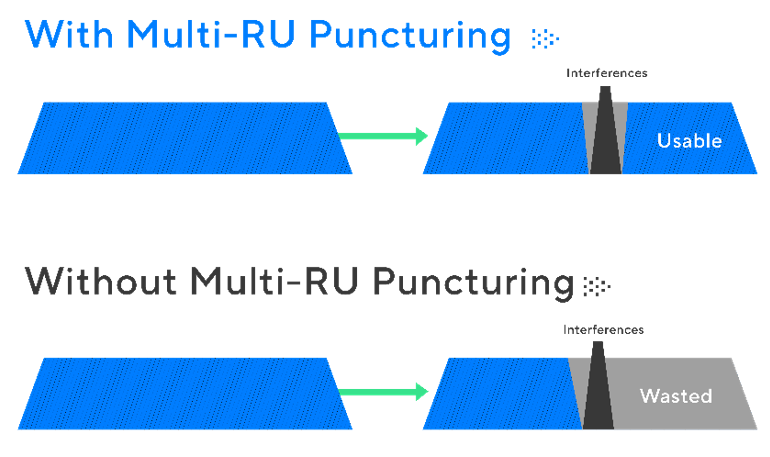
Before Wi-Fi 7 came along, an entire wireless channel could be claimed by a single connected device. With Multi-RU and preamble puncturing, Wi-Fi 7 devices will be able to take full advantage of the remaining parts of the channels that are idle or even interrupted. Simply put, now data transmission becomes quicker and more reliable, and channel bandwidth can be used more efficiently.
MU-MIMO (Multi-User Multiple-Input Multiple-Output) supports multiple users to transmit and receive data simultaneously. With 16×16 MU-MIMO, Wi-Fi 7 doubles the number of spatial streams in comparison with Wi-Fi 6, thus increasing network capacity. Now more WiFi devices can work smoothly at the same time.
*Note that 16×16 MU-MIMO is not a mandatory feature for all Wi-Fi 7 devices though it is the maximum technical standard of Wi-Fi 7.
For more specifications and our Wi-Fi 7 products, please visit ASUS official website:
https://www.asus.com/content/wifi7/
https://www.asus.com/






